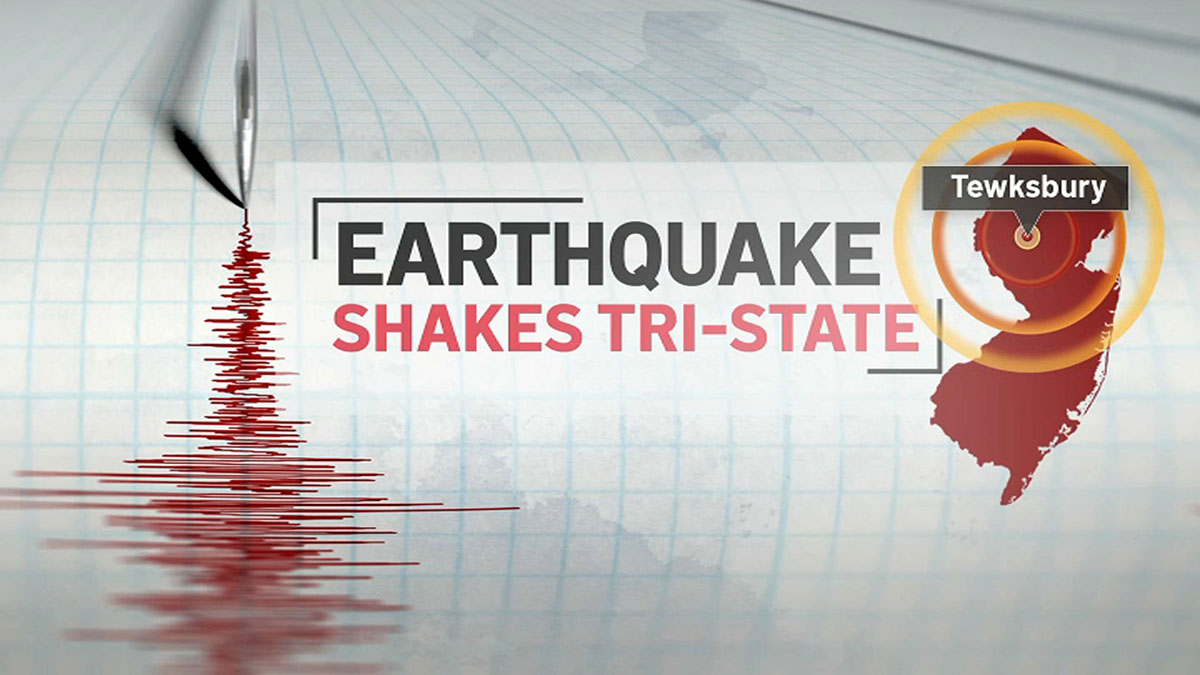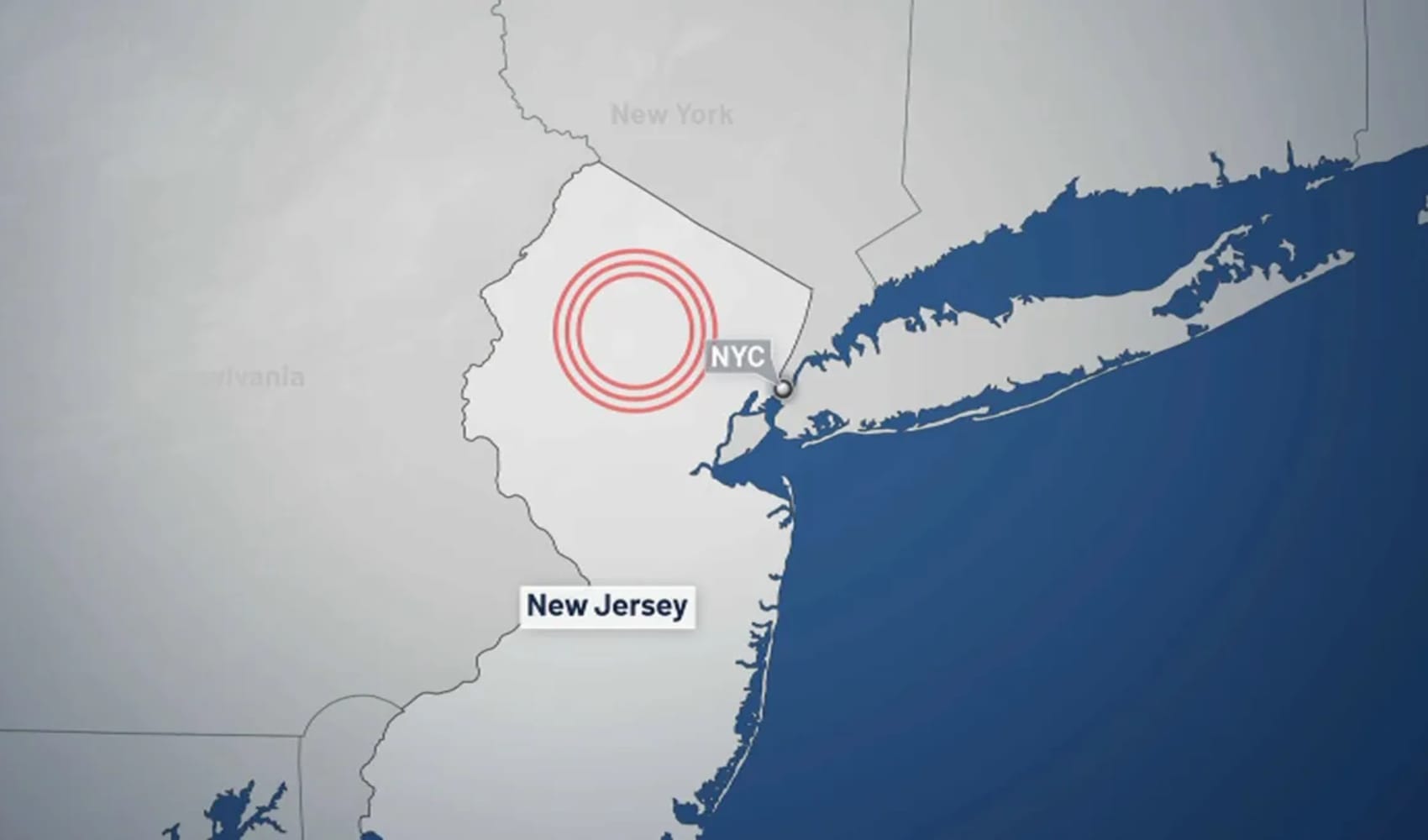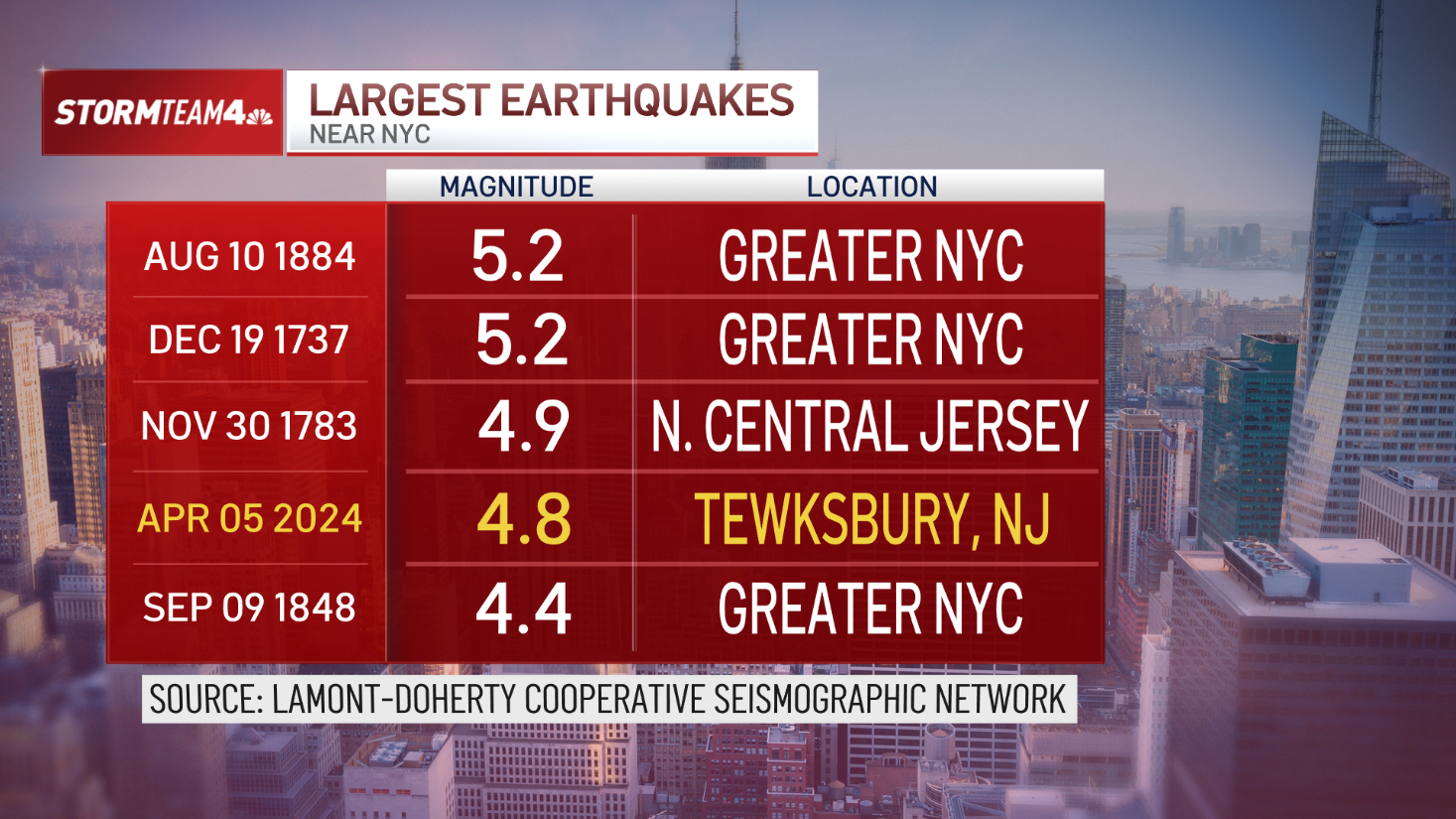What to Know
- Earthquakes are the result of rapid motion along a fault line. In Friday’s case, it occurred along the Ramapo Fault that runs down the center of the northern part of the state.
- What will trigger an earthquake is a vertical shift in the earth — sometimes deep, sometimes shallow. That movement releases stored up energy.
- In the Northeast, where the Earth’s crust is brittle and earthquakes occur close to the surface, they are often felt far and wide. Quakes typically are quick, only lasting 10-30 seconds, like the one Friday morning.
For many across the tri-state, Friday’s earthquake may have been the first time experiencing such a wild and unpredictable occurrence.
Earthquakes in general are uncommon along the East Coast, and ones as powerful as the one that hit on Friday are exceedingly rare. There have only been three other times when magnitude near 5 or above have hit the tri-state area, and each of those was in the 18th and 19th century, respectively. It’s also been more than a decade since the area has even felt an earthquake as strong, when a 5.8 quake hit Virginia and the impacts were felt throughout the New York City area.
So what’s the science behind what happens to cause an earthquake? Here’s a look at the anatomy of the New Jersey quake and an explanation of the why and how of it all.
Get Tri-state area news and weather forecasts to your inbox. Sign up for NBC New York newsletters.
What causes an earthquake?
Earthquakes are the result of rapid motion along a fault line. In Friday’s case, it occurred along the Ramapo Fault that runs down the center of the northern part of the state.
What will trigger an earthquake is a vertical shift in the earth — sometimes deep, sometimes shallow. That movement releases stored up energy.
"The Ramapo fault which is the fault zone on which today's earthquake occurred, was active 200 million years ago. Plate tectonics is still responsible for the stress that builds up in the middle of plates," said Dr. James Davis, of the Lamot-Doherty Earth Observatory. "It's like if you're stretching a rubber band slowly so that you can't feel it at any given instant, but after a long time, when you let go, it will bounce back."
Millions of years of Earth's movement contribute to what was seen Friday. What Davis was referring to elastic strain, which causes seismic waves that cause the earth to shake.
In the Northeast, where the Earth’s crust is brittle and earthquakes occur close to the surface, they are often felt far and wide. Quakes typically are quick, only lasting 10-30 seconds, like the one Friday morning. But depending on the intensity and where it occurs, it can cause significant damage.
What made Friday’s earthquake exceptional is that it occurred in a densely populated corridor filled with skyscrapers and infrastructure, both above and below ground, in a region that simply doesn’t experience earthquakes of that magnitude often.
What's the difference between East and West Coast quakes?
The West Coast lies on a boundary where sections of Earth’s crust rub together, causing stress and slippage along fault lines that generate earthquakes relatively often.
East Coast quakes like Friday's are caused by compression over time of hard, brittle rock deep underground, according to Robert Thorson, an earth sciences professor at the University of Connecticut. “It’s like having a big block of ice in a vise and you are just slowly cranking up the vise,” he said. "Eventually, you’re going to get some crackling on it.”
These East Coast quakes can be harder to pinpoint. And they tend to affect a broader area. That’s because colder, harder East Coast rocks are better at spreading the rattling energy from an earthquake.
The distribution of cities across the East Coast also means that more people are around to experience the effects of a quake.
“We also have population centers over a large part of the northeast,” said Leslie Sonder, a geophysicist at Dartmouth College, “So a lot of people around here feel the earthquake.”
How do you stay safe during a quake?
Despite the infrequency of earthquakes, preparedness and communication are two key takeaways from this event. While the events can’t always be predicted, everyone can learn how to prepare for them.
USGS experts say there is a risk of aftershocks for weeks to months, which are expected after any earthquake. They recommend paying attention to emergency messaging from local officials.
To keep safe from shakes while sleeping, remove any furniture or objects that could fall and injure you or others.
If you feel shaking, drop where you are. Cover your head and neck with one arm, crawl under a table for shelter and hold on. If there’s no shelter nearby, grasp your head and neck with both hands until the shaking stops.




